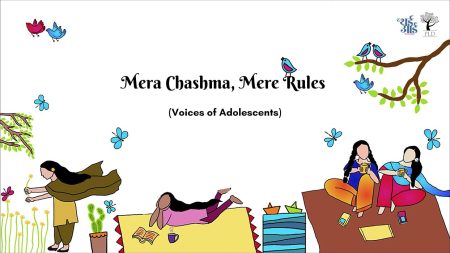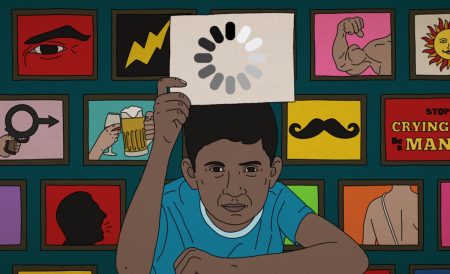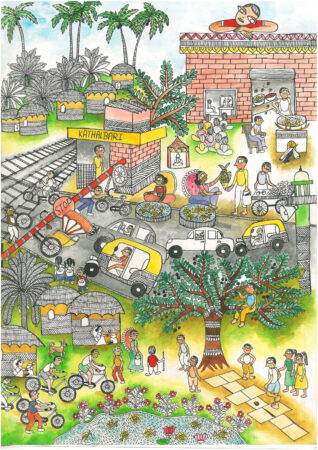Since December of 2014, The Green Hub in Tezpur, Assam, has turned teachers, forest guards, footballers, field guides, students and youth-at-large, from across the varied landscapes of the north east of India, into documentary filmmakers. But that was just a trick. Using the camera as a tool, the filmmakers are leading a massive community-based conservation action in their wonderful, fragile ecosystem.
The Third Eye spoke to filmmaker Rita Banerji about The Green Hub, which has helped a whole generation of local youth build a new relationship with their own environment, affecting migration patterns to cities, and rediscovering their neighbours in surprising new ways.
With inputs by TTE Team
You have been an environment and wildlife filmmaker for almost three decades, using filmmaking as a form to bring awareness to some critical environment crisis. What made you move towards it as a tool for community-based education?
My understanding of India, my understanding of what it means to protect a species, what it means for a community, what the interconnections are — all have come from the films I’ve made.
The nature of my work was such that I ended up travelling across India for several years. I realised that nothing could be seen in isolation. While doing our films I realized that a) our films can be used very effectively by people in the field – NGOs to government agencies to communities themselves. And b) that the films themselves become a catalyst for change.
But at the same time, I think that at least, personally, for me, I had reached a point of restlessness, where I felt that the film is not enough. One needs to really impact things on the ground, you know? One felt the need for scaling up conservation.

And while films are very, very strong tool, can they be used for scaling up conservation?
So, that’s where all my thought processes converged.
What are some of the films you have made that had a lasting impact on how you planned for the concept of The Green Hub?
One of the first films I worked on was Mike Pandey’s The Last Migration (1994), which was on the capture of a herd of wild elephants, after they had killed about 19 humans. But the film brings the man-animal conflict to the forefront [massive deforestation is one of the root causes of the elephants moving into human settlements], and became the first film from India to win the Green Oscar.
In the year 2000, we did Shores of Silence, which was on the killing of whale sharks – nobody had heard of whale sharks being killed in India. [It was] being killed for its liver, which was used for waterproofing boats, and its meat was exported as ‘tofu meat’. The film led to the ban on killing whale sharks in India, as well as putting them under the Wildlife Protection Act. Now, we saw a film that had direct impact on saving a species, and similarly, there has been work by other filmmakers in India who have impacted an actual process of change.
Then, in 2007-’08, we were working on a film called the Wild Meat Trail, which was on the hunting in the North East. We were curious about the two kinds of hunting: you have hunting of wildlife for poaching, and there is a huge network of trafficking across the world where tiger bones are sold, rhino horns are sold, bear bile is sold for huge amounts of money and that network is led by many global forces. And then, you have hunting, which is at the level of households, where you are hunting for meat for food, right? Our question was that does this latter kind of hunting impact wildlife? And after five years of filming, and using all our savings, the answer is yes. This wild meat, usually hunted at domestic level, was now reaching towns and cities.
Killing of wildlife in general, hundreds of birds are killed every day in one particular area, civet cats, deer, hornbills, I mean all kinds of animals are being hunted and sold in the market. Some of it is cultural, some ritualistic; some hunting is linked to masculinity and ideas of prestige, and some of it is plain economic. The film does not take a black-and-white stand on that. But the truth is that the film did its usual festival and award rounds and did well, but I started feeling that if you want real change you have to work with the community. So that’s where the switch happened. That’s the restlessness I was talking about. I feel films have the power to change, but at the same time, you can take it further…
It takes years of work, behaviour change, understanding of ecology, forest, and that’s what I was interested in.
Made by Green Hub Fellow Shaleena Phinya, this film is about one of the most biodiverse community reserves in the world and how the Bugun community and the Forest Department come together to manage it. The forest patrolling team of SBVCR (Singchung Bugun Village Community Reserve) are the youth from the Bugun community from Singchung. Shaleena is a member of the forest patrolling team.
How is The Green Hub structured?
The Green Hub offers one-year, residential fellowships to youth across the NER (North East region), and helps create an alternative livelihood and interest for the youth, as well as create a resource hub and an archive of the biodiversity in the North East. Since December 2014, word of The Green Hub fellowship has spread through social media, emails, phone calls, word-of-mouth, posters on public transport going to remote areas… our effort is to reach more and more remote areas, areas we haven’t touched yet. We receive hundreds of applications, from which about 20 are chosen. Our partners on this are The North East Network (NEN), who are part of the selection process.
Because it’s a residential fellowship, for the first three months, the Fellows live together almost 24/7. Many conflicts emerge, because cultural and regional identities are very strong. That’s when we intervene – to bring in the core value of the curricula – respect for what’s outside of you. It’s the only way to build value for natural environment – by iterating respect for it.
Many of the learnings go beyond just what is tangible. But, at the same time, if those are embedded in a conscious way, when you put it [across] as a conscious thought, that everything you do has to derive from respect – then everything you deal with is also dealt with through the same lens. And that helps in dealing with issues of anger, maybe issues of substance abuse. But, ultimately you make everyone look at the core values of being human.
What’s really great to see is that we’ve managed to create a space where Fellows develop a sense of camaraderie, of mutual aid and mutual support, of effective communication and acceptance. It’s not a competitive space. It’s collaborative, and there’s a sense of learning with each other. The skill of generating compassion and respect for each other. The most valuable thing is that they start understanding each other each other’s region, they’re looking at each other’s films, making films on each other’s communities… When you see these borders disappearing, these barriers breaking down – that is my favourite part of the learning.
How did you arrive at ‘respect’ at the core value for your teaching?
Many factors, my own upbringing, of course. But our partnership with the North East Network was key. They look at gender justice, values of respecting women, respect between states and communities.
So, while their world has been about violence towards women and mine is about violence towards nature, we were both, essentially talking about the same thing.

Could you break down the thought process behind your curriculum at The Green Hub?
So, we always knew that our final goal was instilling conservation action amongst the youth of NER (North East Region), and our tool was video. Since my entire learning about the environment has been through the making of films (as opposed to just watching them), that is what I have tried to translate into the curriculum.
We used video documentation as the spine of the curriculum, emphasising its fundamentals. So, right from the basics: whether it’s shooting a flower, building or landscape, how you’ll frame it, mid, close or wide. Understanding why you’ll frame it like that, the purpose of an image. The next stage is editing or storytelling – and we have all kinds of practitioners who come and give inputs here.
How to tell a story and not leave it at the level of ‘issue’, is always the biggest challenge.
After this it’s practice, hardcore practice. It’s like learning how to drive a car. Only once you drive a car enough, once it becomes muscle memory, can you start looking at the landscape.
And is the ‘looking’ a part of the pedagogy?
Yes. But you can only ‘look’ once your roots are really strong, and by roots I don’t mean just the skills to shoot and edit, but to think. Thinking is a skill.
You have to move from looking at the tiger or insect, to thinking about it. It starts with an observation exercise: you start by looking what is around you. You look at the leaf, you look at the bird, at the frog. Then you start thinking about the bird. What is the role that it’s playing in your local ecology? How does it affect the food on your plate?
You start realising that the bird pollinates your field and that’s how I’m getting food, and maybe it shouldn’t be hunted. Similarly, how is the existence of the frog helping your ecosystem, and what dies with indiscriminate killing of frogs? So, the curriculum encourages deep grounding in fundamentals, and then each Fellow internalises it in their own way, according to their own region and histories, and takes it forward.
So, how does the camera help in this reflection, in going deeper?
Actually, if one has managed to translate the thought process to the students, the role of the camera becomes magical.
As soon as you look at your own forest, your own area, through a camera, it focuses you.

What has been the journey of the Fellows after they leave Green Hub?
It’s been seven years, and we have almost 88 alumni, and a lot of them are actually directly working with their communities on conservation issues. They are using the camera, but they are directly engaging the community and finding ways to regenerate a forest, to protect existing forests, to initiate a dialogue on conservation. A lot of them are working in that mould, while some of them are working with films, some of them are working with NGOs.
What is one of the most surprising things that one of the Fellows initiated?
Um, not surprising as such, but it’s a happy feeling you can say. One of the young men, Vanmay, he’s from the Kunya community in a very remote area of Nagaland. He was in our first batch, and highly skilled in shooting and editing. After the Fellowship ended, he and three others formed a company together called Genesis 4. They had come from different states, and in the North East, this itself is a very good indicator because you have conflict, you have violence. But here is a boy from Arunachal, a boy of from Nagaland, a boy from Assam, and a boy from Meghalaya, and they were coming together to work together. Vanmay also works very closely with his community where opium has been a huge issue since the 1990s; he and a group of people have set up rehab centres, set systems of putting fines on people who were selling opium, and Vanmay was documenting that. And last year, he initiated a Biodiversity Committee with six other youths, to help bring back the forest on land almost entirely lost to jhum cultivation.
So these steps, this initiative, has come from his understanding of conservation in the time he spent at Green Hub.
The aim is, of course, for the network to reach a critical mass of Fellows – where in each block, in each district you have a Fellow so they can actually start becoming visible, and can make visible change, not just to conservation overall, but also in the thinking. And that, I would say, would be the first strength of the network, and it’s where we’re trying to reach.

What would you like to say to educators working in other parts of India, about incorporating environment awareness in their curricula?
How I define conservation is not just wildlife and environment in isolation. I really feel that conservation is the foundation of a sustainable, equitable life for the community, for all of us, in fact. If any of us examines our life today and we think of our future, it is rooted in environment or the ecological security of our surroundings – in cities or rural areas… We are going to run out of water, we’re going to run out of food. It’s not even an imaginary future now. It’s already happening. There is no alternative but to scale up the work in conservation, and integrating conservation thinking across the board.
Green Hub has expanded to Central India, with fellows from Chhatisgarh, Jharkhand Madhya Pradesh and Rajasthan. Working out of Bhopal, the first batch has 21 rural and tribal fellows representing all these states, with some of the Green Hub alumni from the north east as mentors.
Green Hub Central India emerges from a partnership between Dusty Foot Foundation and Mahashakti Seva Kendra.
Workshop
Ways of Seeing A Bird
In pairs, take your phone camera and look through various elements of nature around your home. It could be a tree, a leaf, a bird, horizon over a field, reflections on water channels. Shoot the same frame at three times of the day (if the bird has flown, shoot the branch it was on) – when the sun is slanting (early morning/early evening), and when the sun is high in the sky (10 to 1 pm). Note down what you notice each time you shoot the same frame.
Start an Instagram page of the plants, animals and trees around you with your photos. Ask elders around you about the stories associated with these and write them as your Instagram posts.
Develop a local meet-up of young people with similar interests and ask them to document the same thing around their homes and places of work. Collate the photos and videos to create a local archive of nature that is disappearing from your grandmother’s time (what you see less of now), and nature that persists.





